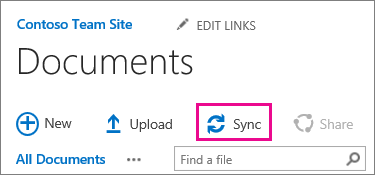
- Onedrive sync client for sharepoint how to#
- Onedrive sync client for sharepoint for mac#
- Onedrive sync client for sharepoint install#
- Onedrive sync client for sharepoint software#
- Onedrive sync client for sharepoint mac#
To enable this setting, you must define a number between 1 and 99 that determines the percentage of bandwidth the sync app can use out of the total available bandwidth.ĪutomaticUploadBandwidthPercentage (Bandwidth) BlockExternalSync This setting enables the sync app to automatically set the amount of bandwidth that can be used for uploading files, based on available bandwidth. plist file is:ĪllowTenantList TenantId1 TenantId2 AutomaticUploadBandwidthPercentage If the boolean value is set to True, the tenant is allowed to sync. For the setting to be complete, this parameter also requires a boolean value to be set to it. The parameter for the AllowTenantList key is TenantID and its value is a string, which determines the tenants for whom the Allow Tenant setting is applicable. Do NOT enable both settings at the same time. This setting takes priority over Block syncing OneDrive accounts for specific organizations setting. If the user has already added the account, the files stop syncing. If you enable this setting, the user gets an error if they attempt to add an account from an organization that isn't in the allowed tenants list. This setting prevents the users from uploading files to other organizations by specifying a list of allowed tenant IDs. When you apply the settings, ensure that you target the appropriate domain depending on the edition of the sync app. plist file name and domain name will be different.
Onedrive sync client for sharepoint mac#
The keys are the same whether you run the standalone or Mac App Store edition of the sync app. Use the following keys to preconfigure or change settings for your users. On the next start of OneDrive, the new settings will be picked up. You can also use a script to set the default values.ĭeploy the settings onto the local computer. ~/Library/Containers/-mac/Data/Library/Preferences/Ĭonfigure the settings on macOS as follows:ĭefine the settings you want to change by creating a.

Onedrive sync client for sharepoint for mac#
Preferences for the OneDrive sync app for Mac are stored in property list (.plist) files. As an administrator, you might want to provide users in your organization with a standard set of preferences. Manage OneDrive settings on macOS using property list (.plist) filesĪfter the OneDrive sync app for Mac is installed, users can configure settings for the app.

You can also use Apple Remote Desktop and AppleScript. Other common tools are Jamf Pro, Munki, and AutoPkg.
Onedrive sync client for sharepoint software#
The OneDrive sync app for Mac uses the Apple Installer technology for installation allowing you to use the software distribution tools that you normally use to deploy software to Mac users. By using a software distribution tool, you have more control over the deployment, including which users get the sync app and when.
Onedrive sync client for sharepoint install#
To install the OneDrive sync app for Mac, a user has to be an administrator on the Mac or know an administrator account name and password.ĭownload the installer package file to your local network, and then use your software distribution tools to deploy the app to your users. Install and set up the OneDrive sync app by following the instructions in Sync files with OneDrive on macOS. (More on this later to reduce the 8-hour wait)īefore we setup our Configuration Profile within Intune, we’ll need to gather the SharePoint document library ID(s), for this example, I will use the Sales and Marketing departments library, once you’ve browsed to the lib, click sync.There are two basic ways that you, as an administrator, can deploy the OneDrive sync app to Mac users in your organization:

Onedrive sync client for sharepoint how to#
This post will describe how to set-up the Windows 10 client to automatically sync the SharePoint document library. On the road to modern management, the decision on what to do with user profiles and departmental data comes up very quickly, in the traditional environment we would typically have DFS file shares setup for Departmental data and Active Directory home folder created for every user (sometimes referred to U or H Drive, etc), the modern management approach is typically to migrate the end-users home folder to OneDrive and to migrate departmental shares to SharePoint document libraries, Azure Files Sync or Microsoft Teams (I won’t cover Azure files sync or MS Teams).


 0 kommentar(er)
0 kommentar(er)
